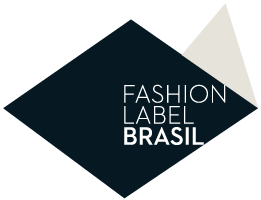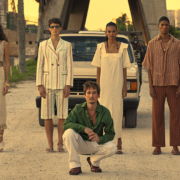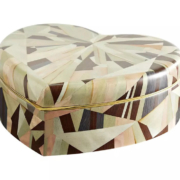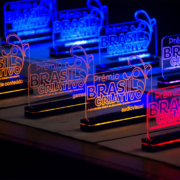How has sustainability accelerated change in PR (Public Relations) practices and strategies
PR professionals face a new challenge: how to position clients in a market where there is increasing demand for responsible products and promotes not only new business opportunities for advertising agencies, but also new responsibilities.
“Two out of three unsolicited calls that we get are about our sustainability practice”; “It’s the fastest-growing thing in the agency. Sustainability-centric roles that open at the firm are ‘some of the fastest things we’ve ever filled’, Carrie Ellen Phillips, co-founder of 22-year-old agency BPCM.
A change in paradigm
It hasn’t always been like this. Erin Allweiss started the company No. 29 Communications in 2013, after spending years working for organizations such as the National Resources Defense Council (NRDC) and Oxfam. In 2015, the show brand Vert joined No. 29.
“It was definitely not easy to talk about sustainable fashion;” “It was such an arduous battle to make it into something attractive and now that it’s cool, I think there is a different problem,” Erin Allweiss.
In other words, fashion is addressing sustainability but now there is much more pressure to distinguish companies that really have a positive impact from those that practice greenwashing (giving a false impression and producing ecologically correct marketing to persuade the public).
“As brands come under increasing pressure from its consumers and market regulators to back up their sustainability claims, some advertising agencies are building expertise in order to stand out – both for fashion brands seeking representation and for journalists seeking PR contacts with reliable sustainable sources,” Business of Fashion.
Marketing that has meaning and the circular economy
The circular economy is already a reality: “Our ways of living and consuming are at stake: knowing and understanding sustainable work broadens our creative perspective. It shows us that transformations can be made through concrete actions, using tools and processes for the development of products and services that respect the environment.
In Brazil, there are some initiatives in this field, and it has already been made clear that a circular approach fosters innovation and brings new meaning to business endeavors, propelling the development of new material and work processes.” Find out more.
Brands such as Vert, Catarina Mina, UMA, Flávia Aranha, Augusta, Dotz, Movin, and Osklen open up their work flow, disclose results, publicly report on the relationship with its collaborators and clearly inform how they choose and certify the origin of the raw materials used in their productions.
The Brazilian brand UMA, which focuses on collaborative creations, connections, and timeless productions created a “younger sister,” UMA X, run by Vanessa Davidowics, daughter of Raquel and Roberto Davidowicz. With genderless pieces, sold only in retail and e-commerce, the brand has more affordable prices and a sustainable proposal. The brand’s name already denotes its collaborative character: the “X” connects to artists and to initiatives that the brand collaborates with.” Forbes.
“We believe in a different kind of fashion, a fashion that is focused on who produces and questioning, rethinking, reflecting, and making decisions based on the collective interest. It is a type of fashion that thrives in a collaborative future, more so than in a competitive environment,” Catarina Mina.
“In a simple and direct way, we seek multiple solutions for a smarter consumption, one that will guide us towards genuinely achieving a good way of living that is cleaner, more functional and more collective. Redefining the concepts of our products and applying a design that minimizes negative impacts are key to our strategy and will always be our aim,” Movin.
Vert invests in research and new technology, presents fair trade and more economically equitable organic raw materials for those who are involved in the productive chain. Find out more…

Sustainability must be a priority for any brand. Setting concrete goals and objectives is what will actually incorporate new sustainable processes into the companies’ operations. Advisories must be prepared to communicate this message assertively, so that this transparency can reach consumers as a positive thing. In some cases, even mistakes and limitations are strategically exposed to consumers. As Oskar Metsavaht stated when interviewed by a Globo journalist: “One cannot become 100% sustainable all of a sudden.”
[RE] STORE Galeries Lafayette, circular and responsible fashion
The traditional Galeries Lafayette, inaugurated in 1894 as the first department store in Europe on Boulevard Hassmann, with 70 thousand square meters spread into three buildings. The store received approximately 100 thousand visitors daily and 15 thousand square meters are occupied by 3,500 renowned fashion brands.
In yet another movement towards the commitment to building a more responsible and inclusive fashion industry, Galeries Lafayette presented [RE] STORE in 2021, a new space for selling second-hand clothing.
Occupying the premises on the 3rd floor of the store, the largest and most traditional retailer in Europe features a sector that is entirely dedicated to circular fashion. Its operation is based on partnerships with the main players in the ‘second hand’ segment and engaged creation, including Monogram, Personal Seller, CrushON, Relique, Culture Vintage, Salut Beauté, Patina, etc. It is worth mentioning that the GL concept for ‘responsible product’ follows the protocols of the Go for Good seal, launched in 2018, which indicates less impact on the environment, support for local production and commitment to social development.
Building a responsible business
“The greatest impact of public relations or advertising firms is the work they do for their clients. When you look at your company’s sustainability impact, it’s not the flights you take or the cups you use;” “What matters the most is how people end up buying and consuming as a result of the company’s actions,” Duncan Meisel, co-founder of Clean Creatives, a group that focuses on pressuring public relations agencies to avoid working with fossil fuel companies
The number of communication and PR agencies that refuse clients who are not aligned with a sustainability agenda is increasing globally.
For companies that are new to the concept of sustainability, public relations experience is an important factor to avoid falling into the Greenwash trap. For this reason, many agencies offer public relations and consultancy services.
“We like to regard ourselves as a ‘critical friend’;” “We see PR challenging [customers] instead of celebrating the success of media coverage,” Harriet Vocking, Eco-Age brand director.
Greenwashing and ESG
Environmental, Social, and Corporate Governance (ESG) is an assessment of a company’s collective awareness of social and environmental factors.
The three ESG criteria verify the company’s financial health and profitability, and its social and environmental conscience.
· Environmental: indicates the company’s behavior in relation to environmental problems.
· Social: how the company relates to its employees.
· Governance: corporate and governance policies applied in the company.
There is a direct link between ESG and the responsibility of brand communication, as greenwashing can not only mislead consumers and investors, but also characterize deceptive advertising and fraudulent performance.
Sustainability reports or ESG reports are not just a marketing document or press office, but a public positioning of companies where the role of communication is fundamental. Learn more about ESG.
#Sustentabilidade #RP #PR #PublicRelations #RelaçõesPúblicas #Greenwashing #ESG











